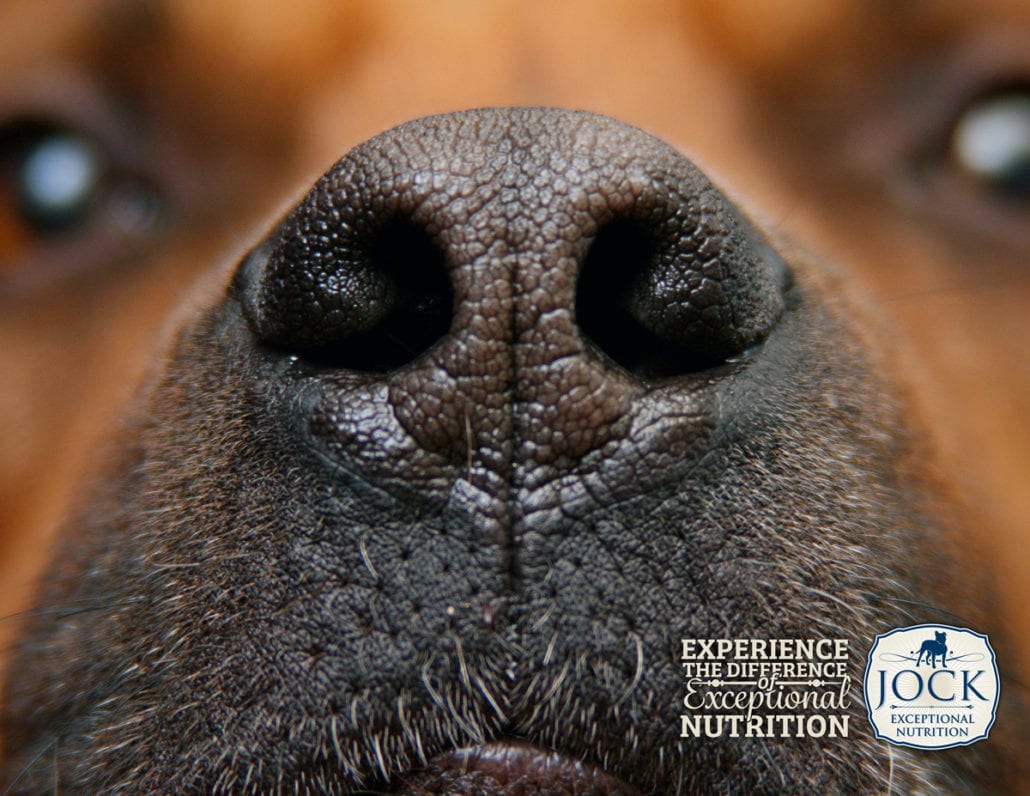Unlike humans that navigate their world using primarily their ability to see and hear, dogs take on daily life led by their sense of smell. As a pet owner, it is important to understand how your dog uses its senses to interact with the world, as this is a key part of providing it with the best possible care. We spoke to our in-house veterinary expert, Louis Boag and asked him to shed some light on the subject.
Smelling
It should come as no surprise that dogs are masters of smell. In fact, their noses have up to 300 million olfactory receptors, compared to the 6 million found in human noses. Also, the part of their brain that deals with analysing smells is, in proportion, 40 times bigger than our own. No wonder they are used to smell out cancers and help law enforcement with search and rescue operations or to find hidden drugs and explosives.
A quick sniff can help your dog discover a lot about its environment, which is absolutely key during its socialisation process. Daily walks around the neighbourhood in your dog’s formative years will introduce it to a myriad of different smells, which is crucial for it to make sense of its world.
Sometimes their tendency to sniff everything can be a little embarrassing. To avoid these situations, carry a treat with you to offer up as an alternative scent for your dog. Teaching your dog simple commands, like stopping an action when you clap your hands, will also help you diffuse embarrassing situations.
Your dog’s nose can also pick up micro particles in the air. Pollen is particularly common in Spring, which can lead to your dog developing hay fever. Luckily for your pooch, canine hay fever won’t affect its sense of smell, but does have other uncomfortable symptoms. Read our article on hay fever in dogs for expert advice on how you can deal with it.
Seeing
Did you know that dogs don’t actually see in grey? Their vision is more like that of someone with red-green colour blindness, which means they can see a bit of colour.
In fact, when it comes to seeing, humans give dogs a run for their money. We are better at picking up subtle changes in grey shades, are about twice as sensitive to brightness and can see further than our furry friends. They, however, are better at sensing motion from a distance, have better peripheral vision and can see much better during times of low light.
As with humans, age will rob your dog of its perfect vision. Signs to look out for include clumsiness, bumping into things, tripping, or an inability to locate toys or a feeding bowl that’s been moved. A dog with poor eyesight might also scare easily or be jumpy when you move in to pet them as they can’t easily identify the person.
Hearing
We might have one up on dogs when it comes to eyesight, but they beat us paws down when it comes to hearing. In fact, hearing ranks as their second most powerful sense. Which is surprising, considering the fact that puppies are born deaf and only start hearing when they are around 14 days old.
But by the time their hearing is fully developed, dogs more than make up for lost time. Adult dogs can hear four times further than their human counterparts and can also hear higher pitched sounds than us. This is why they often bark at the vacuum cleaners and can’t handle fireworks, thunderstorms or loud concerts. Be sure to check out our piece on dealing with dog anxiety to find out how you can calm your dog down when certain noises become too loud.
Once again, old age can affect your dog’s hearing. Signs that your pooch is losing its ability to hear, include being unresponsive when you call it or give commands, not reacting to unfamiliar sounds or ears that don’t move to track sounds. White-haired breeds, like Jack Russells, Dalmatians and Bull Terriers, also have a higher risk of developing hearing loss.
Treatment
Having your dog lose one of its senses can be heartbreaking. Luckily, its keen sense of smell is rarely affected. However, the same can’t be said of its hearing and sight.
Unfortunately, once hearing or sight loss has occurred, there is very little your vet can do. In certain rare instances, sight loss can be reversed if there is an underlying condition responsible for it. But your vet will only be able to determine this with a proper examination.
Owners of blind and deaf dogs should change the way they communicate with their dogs to ensure they can still live a full, happy life. Deaf dogs can be trained to respond to visual cues, like hand gestures, and should be rewarded with food instead of vocal praise. Blind dogs, on the other hand, should be trained to respond to verbal cues. In both cases, owners should exercise caution when approaching their dog to prevent startling them and always keep them on a leash when out for a walk.


